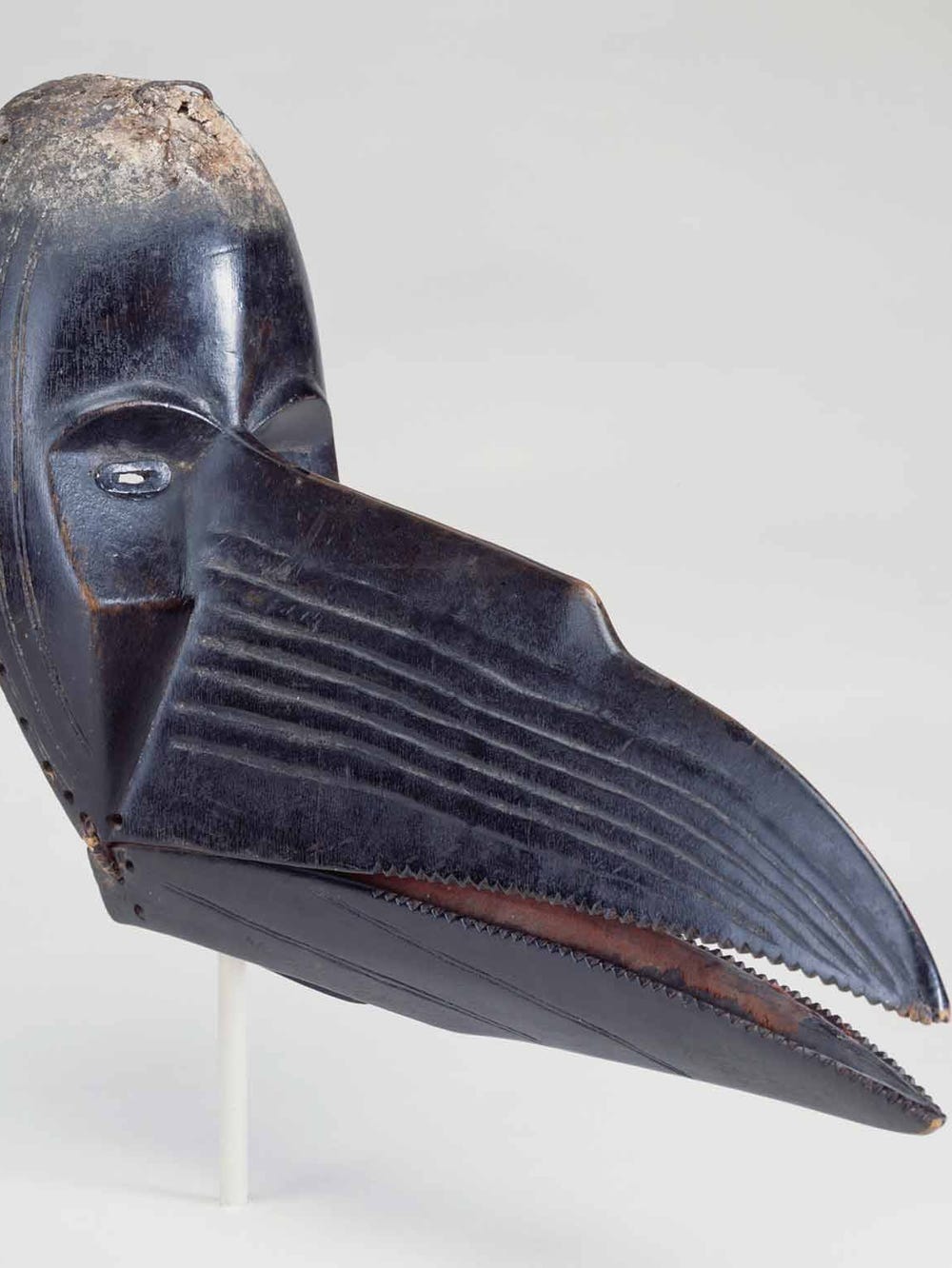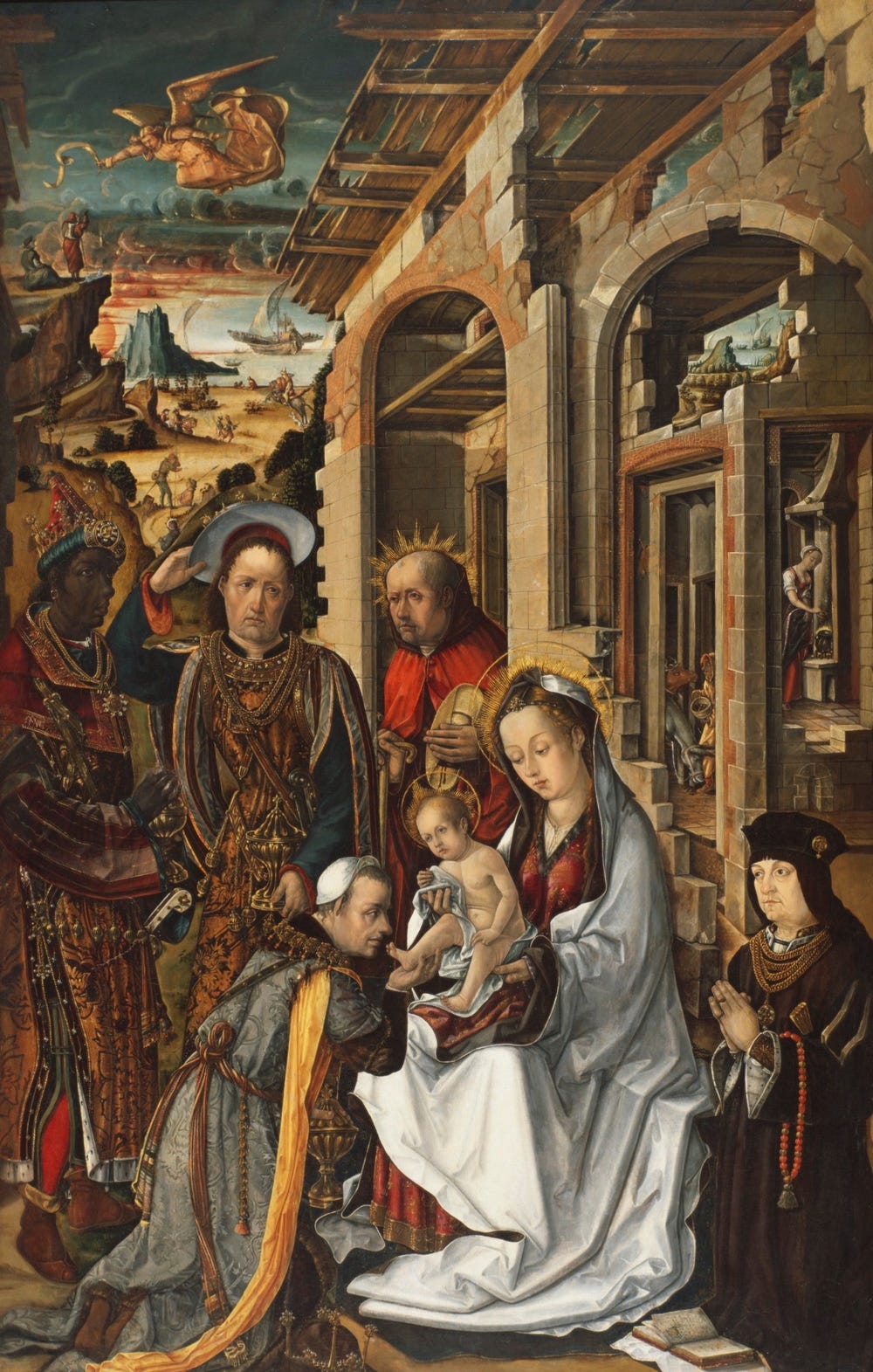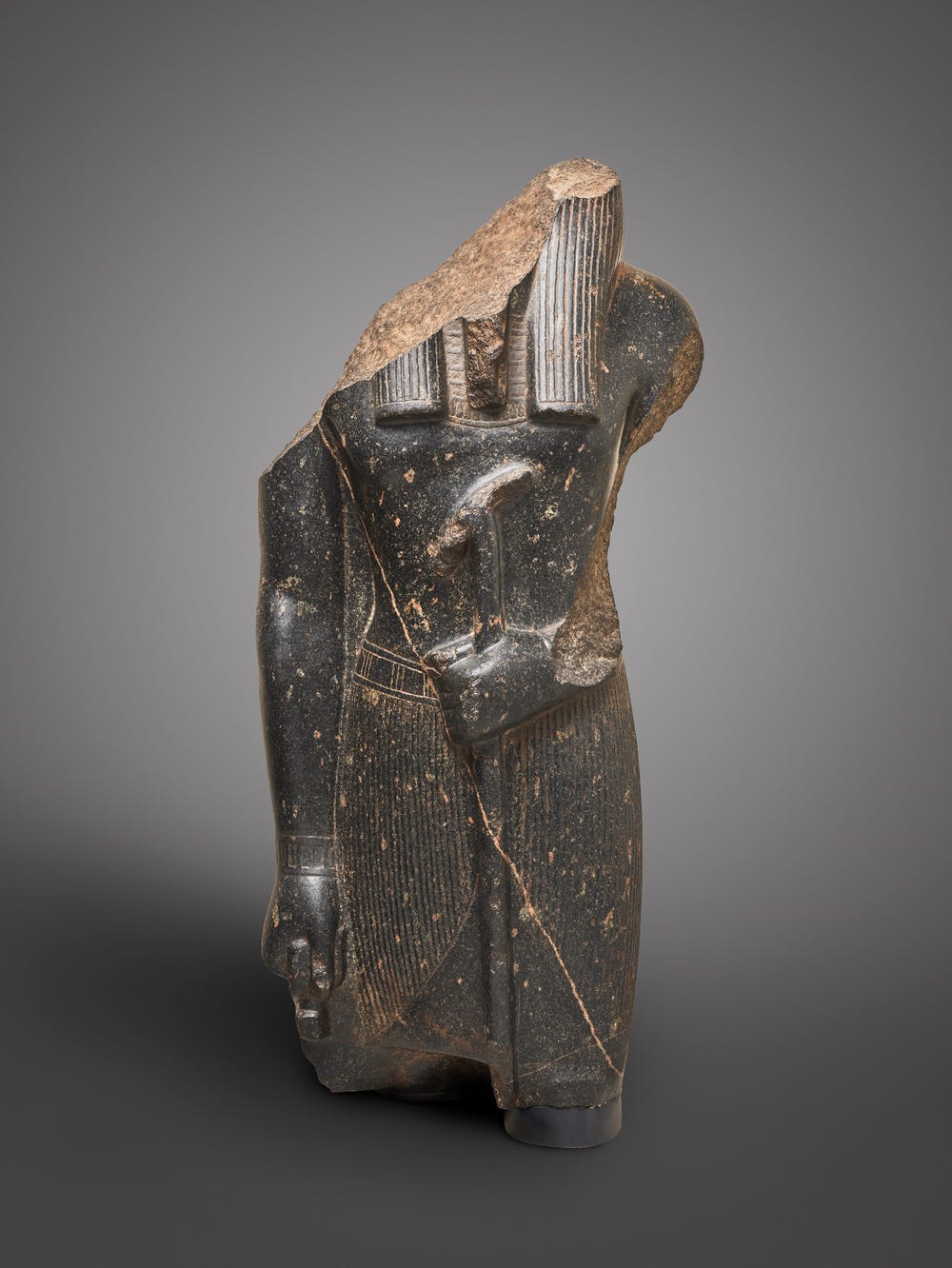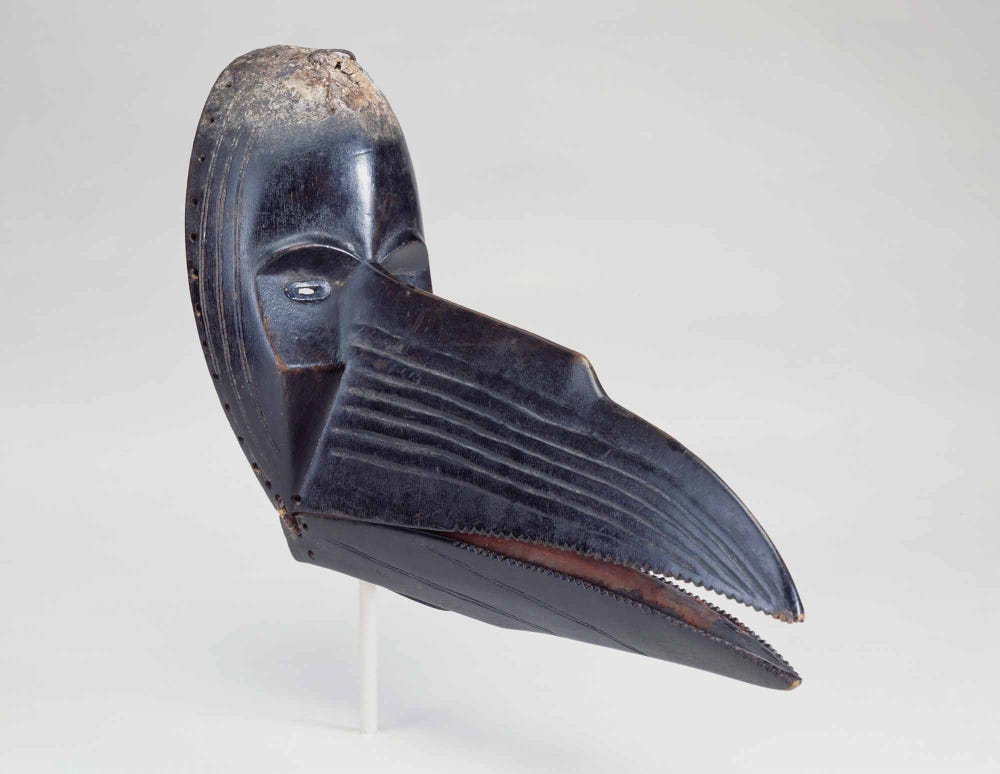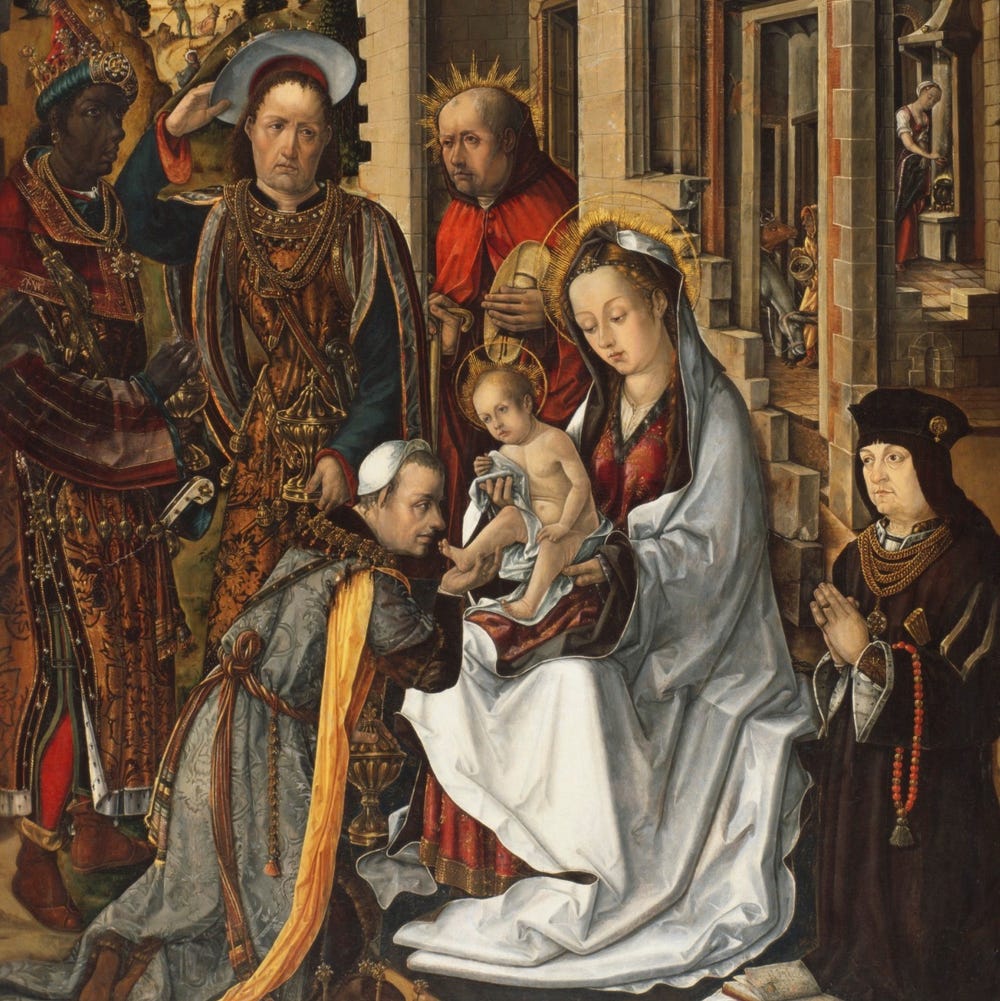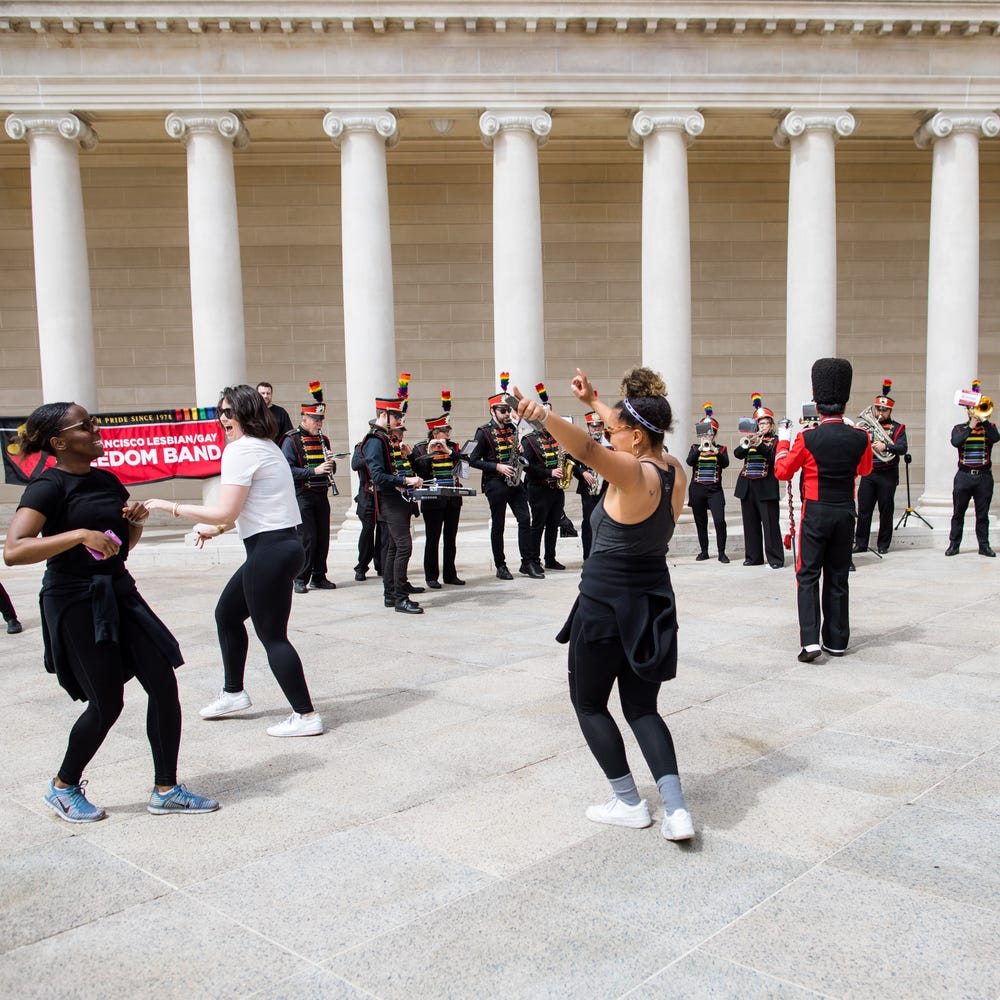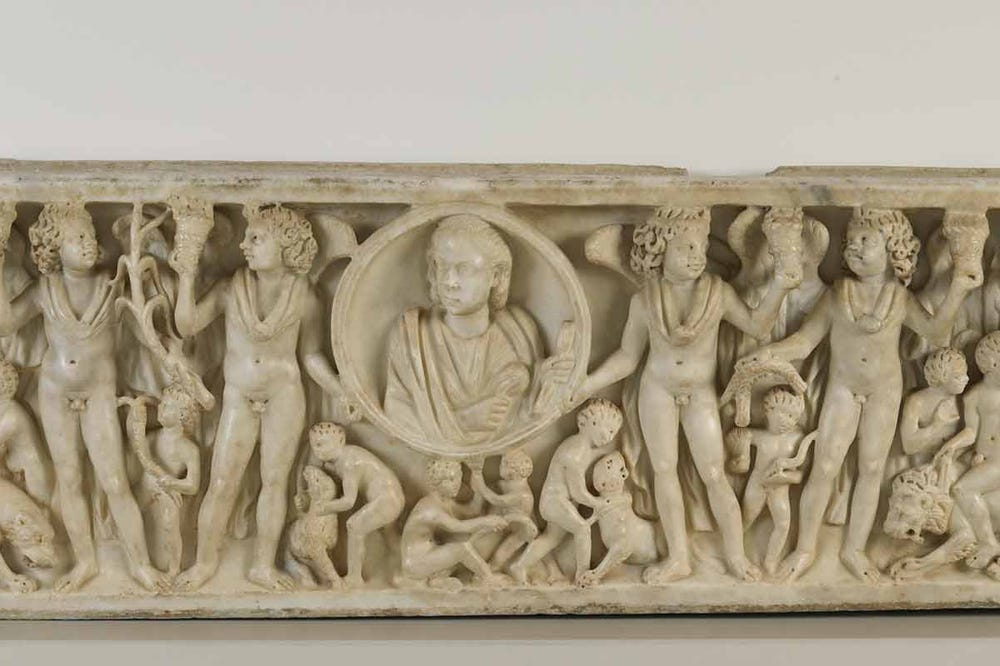Episode 1: How Beliefs Are Represented
Ankhilan: Throughout history, societies around the world have created belief systems that guide and bring meaning to their life. At many points, these beliefs became so important that they became a big part of someone’s identity. Today, we are most familiar with just a fraction of religions, faiths, and beliefs from around the world. Hi, my name is Ankhilan.
Andrea: My name is Andrea.
De’Yani: And my name is De’Yani. In this episode, we will be tackling the value of beliefs and how it can be a key to understanding people across time.
Andrea: So, what do beliefs mean to you?
Ankhilan: When I first laid my eyes on this wooden mask from Africa, the Hornbill Mask, it almost looked like a piece that would represent power and social status. I can imagine the person who would wear this mask as someone pretty powerful and intimidating. Certain features on the mask, such as the beak and the eyebrows were carved sharp and smooth. The mix of human and bird features suggest something that’s greater than humans. This mask was worn in masquerade ceremonies by the Poro society, a secret men society within the Mano people located in West Africa. This group is often referred to as the hunting society and only males were admitted. They emphasize morality and authority. Leaders are often portrayed through masks and represent the community and the environment
Pam McClusky: I’m Pam McCluskey, I’m a curator of African and Oceanic Arts at Seattle Art Museum. When it arrives it’s in the midst of creative chaos. So everyone is stirred up to a degree of concern because it’s usually the mask is arriving when something has gone wrong or something is changing. And so that anticipation is there. There is extreme, rapid fire drumming going on. There’s often a sense of everyone needing to witness whatever movement that mask makes. And the minute they arrive, all eyes are on it, but that mask has total control of where it’s going to go. And they tend to like to be unpredictable. So you’re all on edge. And that then folds into this sense of listening carefully because some of them do have translators who are translating what they’re saying. So you have to listen carefully, but also sometimes they’ll come right up to you and demand that you dance for them.
Ankhilan: The Hornbill Mask was inspired by the ground hornbill for its human-like walk, distinctive call and their loyalty and cared for the young as a couple. Alongside being the inspiration for this mask, there are many beliefs centered on this bird. It is believed to predict wealth and bring rain or even death when you get too close or kill them. This mask is used in ceremonies that marked the coming of age for the young men of Poro society. It is believed that the metaphors and the symbols expressed through the mask will prepare the young men for manhood. Through the ritual of young men dancing with the mask on, it is said to offer protection for the community.
This reminds me of how in our society, when we turn 18, we are considered adults who are responsible for not only our self, but the ones around us as well. In a way the ritual performers are also taking responsibility and offering safety for others. However, not all rituals are meant for everyone.
Pam McClusky: The sense of secrecy dominates at certain times. And there were times when I was a teenager in Liberia, the word would get out that a masquerade was coming and no women and no children could watch it. So you had to sequester yourself and go in quarantine for a period of time. You could often hear it, but you couldn’t see it. And that sense of respecting those boundaries of what that different kind of knowledge was that was not open to everyone was very carefully adhered to.
Ankhilan: What’s also interesting about this Hornbill Mask is the writings found on the inside of the mask. Though, we can’t say with certainty what’s written, some experts believe these markings are similar to Islamic writings. Another possibility could be Vai script. Vai is a unique language that may have been inspired by Cherokee men who moved to Liberia and can be found spoken and written in Liberia and Sierra Leone.
Pam McCluskey: It would have been on the inside so that whoever was wearing it was carrying it with them as a form of knowledge that added to the face of the hornbill. And it’s almost like the double whammy of having two systems of knowledge at your fingertips at the same time.
Ankhilan: Along with Poro society, there is a complimentary all women society called the Sande society. This makes me wonder if there are any masquerade rituals that they perform too.
Pam McClusky: Oh, yes. The Sande society does perform and it’s a fairly famous kind of masquerade that’s known in West Africa because it’s all performed by women. And they at their graduation have these helmet masks that they choose to wear as they are coming into their home community. And they are, as you said, wearing long raffia or straw looking costumes. So their family can’t tell who they are anymore. They’re completely concealed. And they come into the perimeters of their family and are singing and dancing in a much more polished and concerted way than they ever have before. And their families get to witness the fact that their daughter has been transformed and is in a new stage of life.
Ankhilan: It’s very interesting to learn how masks can represent transformation, guidance, and even spirituality for the Mano people. Thanks to this Hornbill Mask, we’re able to get a small peek into the secret authorities in West Africa.
Andrea: Beliefs are what shape one’s reality. Without knowing, we often subconsciously act based on what we believe in. The object of our focus is this stone statue, Torso of a God. This object from Egypt is over 3300 years old. It is thought to have been carved for the ruler Amenhotep III, Royal Jubilee, which is a celebration of life and the reign of a Pharaoh or ruler.
Renee Dreyfuss: Although it looks very much like the Pharaoh that was commissioned for Amenhotep III, we know that at some point late in his reign, he had many of these statues carved for a special jubilee, a Royal Jubilee known as a Sed festival. And these would line a walkway leading to a temple, leading to a ritual place. So we know that this is just one of several that were carved for that king, but that it doesn’t represent the king himself.
Andrea: It’s evident that this life size statue is missing some of its parts such as the head, legs, arms and is left with just a torso. This sculpture actually was a full body at one point. Many works of art represent the beliefs, values and structure of a society. That is what is being done with the Torso of a God.
The reason this object was made was because the ruler wanted his people to believe that it would revitalize the aging king and rejuvenate him with the help of the gods. With time, the Egyptian rulers’ health would slowly fade, but this object is meant to symbolize fresh life, bringing a healthy and strong ruler who would become even more powerful. The right hand of the sculpture, the god is holding the ankh, which is a symbol of life. In his left hand, he holds a sceptre, which is meant to represent supremacy and dominance. This sculpture symbolizes the beliefs of the ruler and those who surrounded him.
Something that caught my eye was how this figure was missing such key parts of their body. It made me question, “Who could this represent?” If I’d never read about the work, it could represent anyone. But what stuck out to me was how many key parts of the figure remained untouched, such as the ankh and the sceptre. That for me, shows strength, which is something that the king is trying to portray. Understanding the beliefs at the time also requires knowledge of the society and social norms.
Renee Dreyfus: Well, you have the king and his family. And then you have the ministers, a wide variety of noble people, some of whom have worked their way up. And what’s interesting about the stratification under the Pharaoh, people if they are very good at their studies, they could become scribes. And if they are very good and they make friends in the right places and network properly, these scribes could work their way up until they actually had powerful positions within the social structure.
Andrea: Curators, Rene Dreyfus, and Louis Chu, explain how we can’t say for sure who the sculptures of. At the time Amenhotep III was the ruler during the golden age of Ancient Egypt. And Egypt, depending on their skills, even scribes could move up the administrative ladder. This object represents the strength of a renewed leader and their power. And just like Ancient Egyptian society, beliefs have always led us to do things that we think will benefit us. Can you recall a time when beliefs influenced your actions?
De’Yani: My first thought when seeing the painting, The Adoration of the Magi was, “Why are there so many people surrounding a baby?” Of course, in most cases, this would come off as weird, especially seeing a man kneeling in front of a child. But when I looked closely, I noticed that this is religious art. And the child could be Jesus Christ.
Having been raised Christian and been in places where images like these are around like in church. And especially when I attended Sunday school, the paintings sparked familiarity for me. The painting depicts three men kneeling and offering gifts to the child. The artist painted the Holy family sitting with the Magis on their left, and one kneeling before the virgin. This is what led me to believe that this painting depicts the birth of Jesus.
Isabella Holland, curatorial assistant in European paintings explained how at the cusp of colonization during the 1400s and 1500s in Spain, the way that people from around the world were imagined, was very different from today.
Isabella Holland: The birth of Christ was such a popular subject in the history of painting because religious art was primarily the biggest source of art that was produced in Europe at this time. The church was a major patron and they often took scenes from the New Testament as exemplary models for the faithful. Why I think that the adoration of the Magi is so popular because it shows three figures giving gifts to the Christ. And there’s a sense of offering the service and they’re providing exemplar models for others to adore Christ and follow him.
This is definitely a devotional object, and it was most likely part of a larger altarpiece. An altarpiece was a work of art that was behind the altar. This could have been for a public church, so commissioned by the church or perhaps for private devotion. When you look at the figure on the far right kneeling down, you can see that it’s a figure, a man dressed in an outfit of the day. And this most likely would indicate the donor who donated funds for the commission of this altarpiece.
De’Yani: When she mentioned that I connected it to my own understanding and what I was told growing up. I was always told many different ideas of how Jesus looked and what he was like since the Bible didn’t provide images. Many believe that Jesus was white with blue eyes, long blonde hair and a beard, while many others believe that Jesus had a dark complexion with hair like wool. Hearing Isabella explain how non-Europeans were depicted in art and are deficient of race today is different than race in Spain during the Renaissance. Made me think about how our expectations and understanding of art has changed.
When I interviewed my mom, Leticia Irving, she explained how she was taken back by how there was little representation of people of color in the painting. If you look closely at this painting, you will notice a figure of color, widely accepted to be King Balthazar.
Isabella Holland: There are so many layers to this painting. And in the background, the very far background, you can see a ship and then in the middle, you can see another biblical New Testament story of an angel appearing to the shepherds. And in the foreground, you can see the New Testament biblical story from the gospel of Matthew, the adoration of the magi. de Osona was known for making religious paintings. In fact, he had sons who were also artists. So you can see that this was a type of job that was passed down generation from generation. He mostly worked in Valencia, which was then the Kingdom of Aragon, which was linked to Castile
in 1469 when Ferdinand and Isabella married. And this is the emergence of Spain as a kingdom. It’s the combination of dynastic marriages of formerly autonomous regions that are now becoming more powerful as they’re linking up. Valencia was also a major port and a cosmopolitan city in Spain, which relates to your first question of looking at the background. You can see ships, does that relate to this being set perhaps in Valencia? Is the donor depicted a merchant? Is he part of this economic system? Is he showing his wealth?
And when you look at this painting, it’s also the magi are bringing gifts: gold, frankincense, and myrrh from all over the world. And a sense of the world being brought to Valencia, does this connect to its merchant identity. It’s really fascinating. These different layers coming together.
De’Yani: My mom explained how the painting was so different from what she learned about the birth of baby Jesus. She went on to talk about how this painting sparked her curiosity and how she wanted to know more about what was going on in the picture, especially in the background.
Leticia Irving: From what I can tell this Magi or what we called them or the three wise men. So I can see that in the background and that is similar to what I was taught, how they came to worship Jesus and were sent by King Herod. So I definitely see that, I see the kneeling at the feet of baby Jesus and giving the . . . so the painting I know that in the title of it, it says the adoration. So I can definitely see the adoration here and that is similar to what I was taught growing up and what my belief is about the coming of the King and the birth of the King.
Some things that differ a little bit is that I see . . . I know that the setting of Jesus’s birth was in the Middle East and that people in the Middle East typically all have darker pigment in their skin and I only see one representation of black skin, and that is not of Jesus. And so for dark skin and so that’s what differs for me is that I’m looking at a baby and some of the other worshipers and people who do not match the image of Jesus of the way that I learned or believed that Jesus would look.
I’m curious, I want to know if I’ve misinterpreted something in my readings or my teachings, or if it wasn’t taught to me that way, it just makes me want to go back in the word and read it. We’re thinking about what century this was or what the time period that this was. And so I’m trying to think about the evolution of things and just how things over time have changed, but in what setting would the sky look like that, right?
What was going on during that time that the sky is so dark and so ominous, and then you have this dragon-like creature flying by and everything just looks a little threatening, right? Doesn’t lookc And I understand where Jesus was born it wasn’t necessarily a place of great means, but it just feels so . . . I don’t even know the word for it or just the feelings, but I’m curious. I’m just curious what this is. I’m curious, was it meant to look so ominous to try to bring to light the humble beginnings of Jesus and just the level of . . . I don’t know, just like the . . . It’s not so the poverty, but just how intense it was when he was born and he was born in the manger and all of those things. Was that what he was trying to bring us to make us draw into that or just look closer at it?
I don’t know. So it definitely just makes me more curious, and just curious. So it’s going to make me dive deeper, look harder and just relearn. I think you grow up and you’ve been told so many things at church and you have loosely used your Bible and then you get away from it. And also you grow up and you start to have different opinions. Right? And to question things that you saw or question things that have been presented to you. So I think between the two, between me questioning things, between forgetting some of the foundational things I was taught and then slipping and not being in my word the way I’m supposed to, I think that, yeah, this painting is like, “Okay, time to go back in and do your fact-finding and ground yourself.” And yeah, it’s something that I’m supposed to be living by. So, thank you.
De’Yani: I was surprised to hear my mom’s curiosity because growing up, I took my mom’s perspective of Jesus’s birth at face value. The older I get and the more perspectives I hear, the more my curiosity grows. Hearing my mom say that looking at this object made her realize that she needs to do more learning and go back on her teachings, made me see that I too have so much to learn.
Ankhilan: As we live our life day to day, we forget how much our beliefs influence our values, choices, and actions. They represent the part of us that cannot be spoken up with words. Art has a similar ability to make the invisible visible.
Andrea: So what are some things in your life that are influenced by your beliefs?
De’Yani: And what does it say about you?
